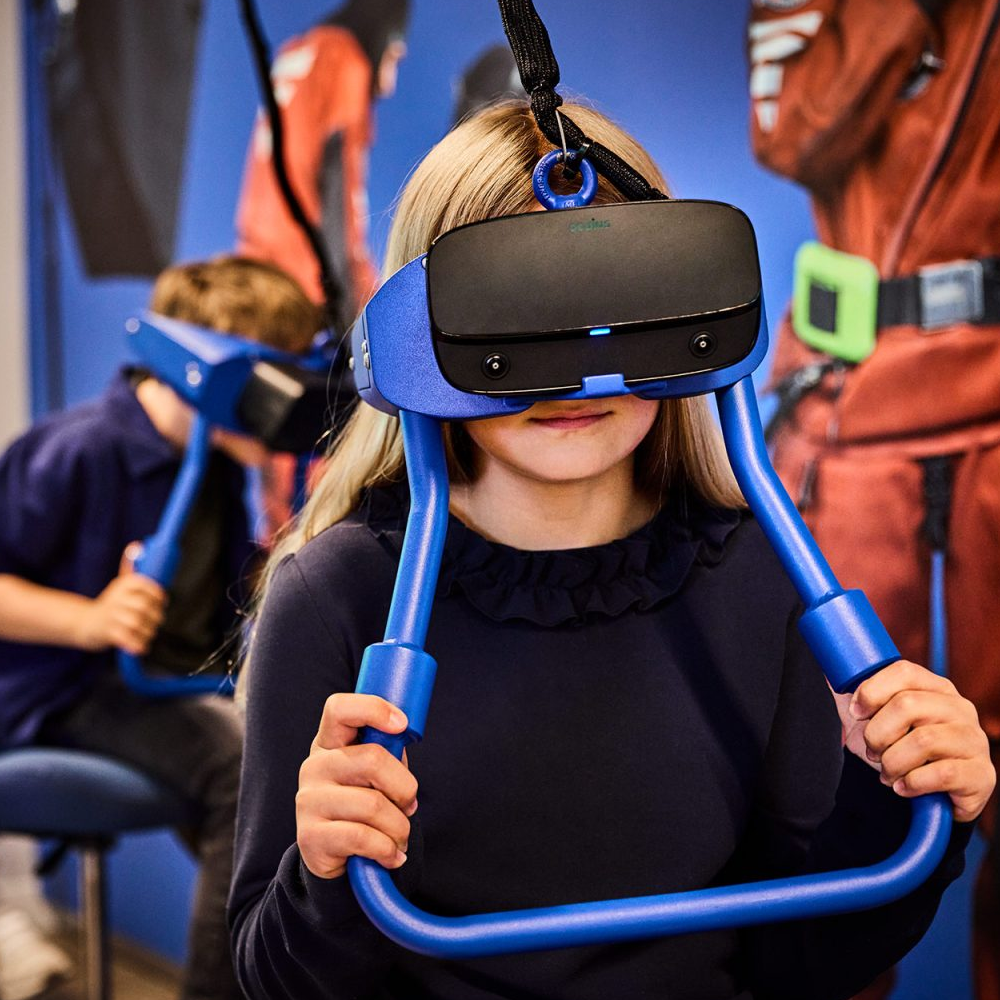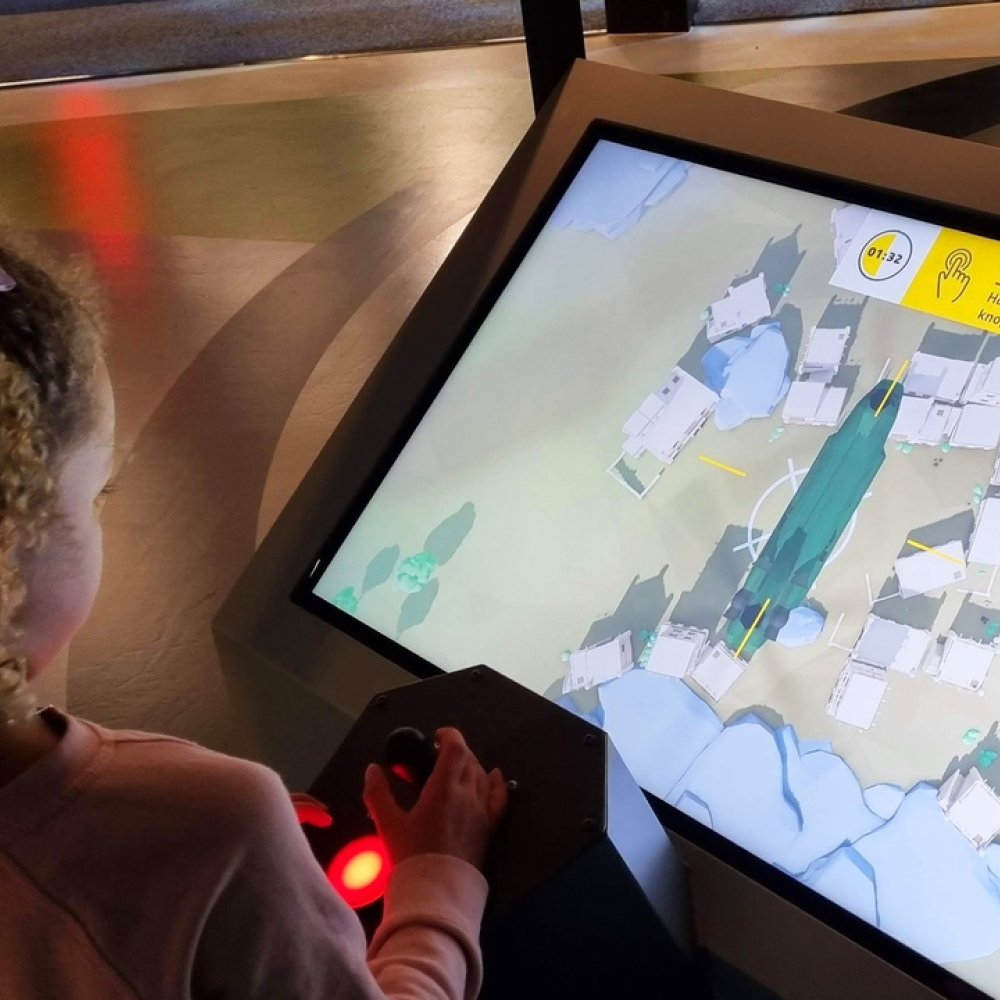a playful, intuitive way of exploring the movie collection
INTRODUCTION
In an interactive panoramic room, visitors discover the quality and diversity of Eye’s film collection in an associative manner. Searching the collection in a non-semantic way by ‘throwing’ fragments onto the wall with the tablets reveal unexpected similarities between cinematic fragments. Visitors also use tablets to ‘catch’ these fragments and view the video’s close up. Their curiosity is triggered and their field of vision expanded.
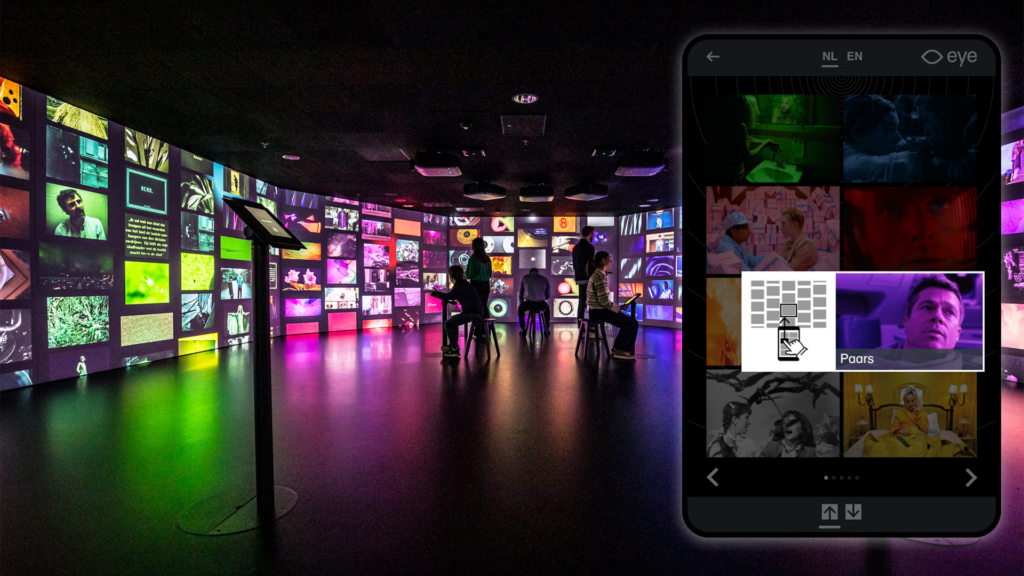
PROJECT DETAILS – A real eyecatcher
Client
Eye Filmmuseum
Realization
2023
Role
Lead designer (temporary / interim)
Responsibilities Gameplay, Prototyping, User testing, Concept, Interaction, Refinement
Partners
Employer Kiss the Frog (software and design)
Partners Studio Louter (project management and content design)
Atelier Alkema (spatial design)
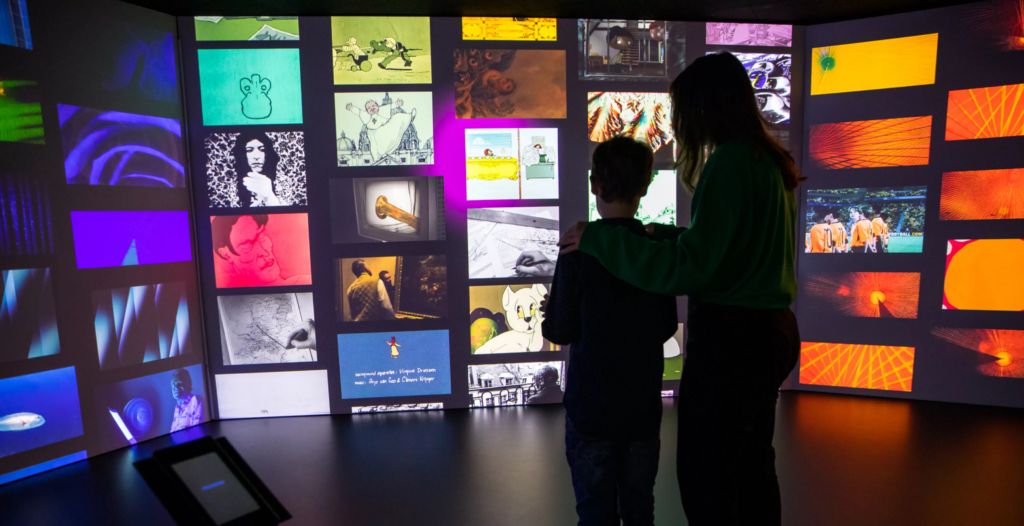
CONTEXT – Eye Filmmuseum
This national museum for film, located on Amsterdam’s IJ harbour, manages more than tens of thousands of films from all genres. Eye is responsible for the Netherlands’ film collection: storing this in a sustainable way, making it accessible, providing context, and keeping it alive.
The collection represents an outstanding sample of film history, from classics and blockbusters to cult films. Eye is sometimes called ‘the cinematic memory of the Netherlands’.
Eye is internationally acclaimed for its knowledge of and expertise in the field of film restoration, research, and education. The employees do their very best to make everything you would want to know about film easily accessible. For young and old, for film enthusiasts and professionals, and from constantly changing perspectives, Eye focuses on film as an art form, as entertainment, and as part of digital visual culture.
The goal of the research was to develop a visual search engine, in order for visitors to appreciate and grasp the vastness of the collection.
CHALLENGE – Opening the immense archive interactively
Put the rich history of cinema at users’ fingertips.
INTERPRETATION – Visual search
Users unlock cinematic similarities with visual search.
In an immersive space, visitors can intuitively influence a flow of movie scenes around them – using a tablet. The eyecatcher allows visitors to discover the quality and diversity of Eye’s film collection in an associative manner. A mechanism for easy search and retrieval is achieved by giving each visitor a tablet for their discovery.
Searching the collection in a non-semantic way by ‘throwing’ fragments onto the wall with the tablets reveal unexpected similarities between cinematic fragments. Sometimes with a color as criterion, then again an emotion, the framing, or movement.
Visitors also use tablets to ‘catch’ these fragments and view the video’s close up. Their curiosity is triggered and their field of vision expanded.
APPROACH – An intuitive mechanism
The backbone of the realization of this interactive was what was underwater (algorithms and localization) so the technical proof of concept was the most challenging.
The magic stems from an intuitive catch and throw mechanism.
WIREFRAMING – Envisioning simple interactions
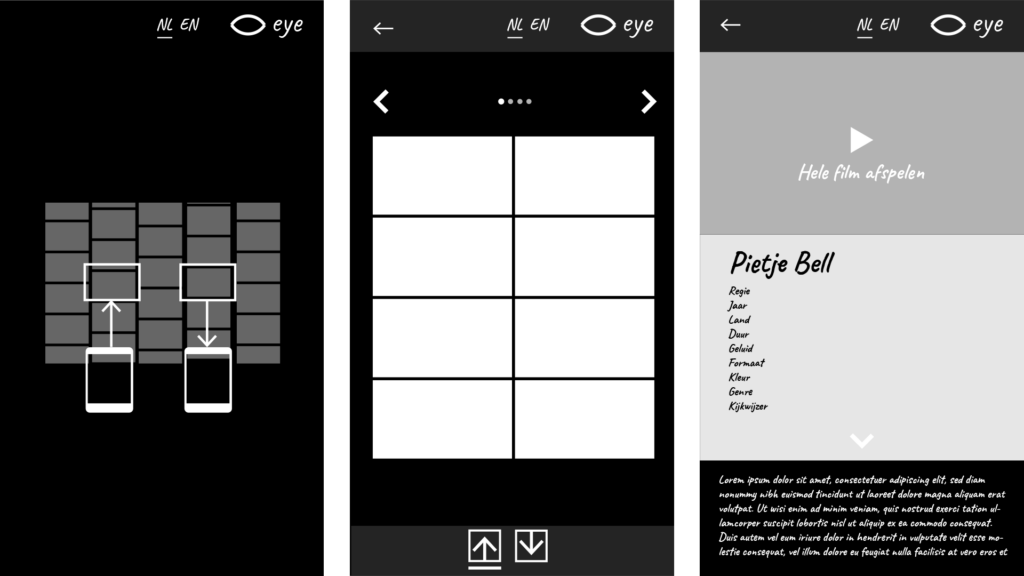
FLOW DIAGRAM – Making the most of the discovery

USER TESTING – Focus on yourself
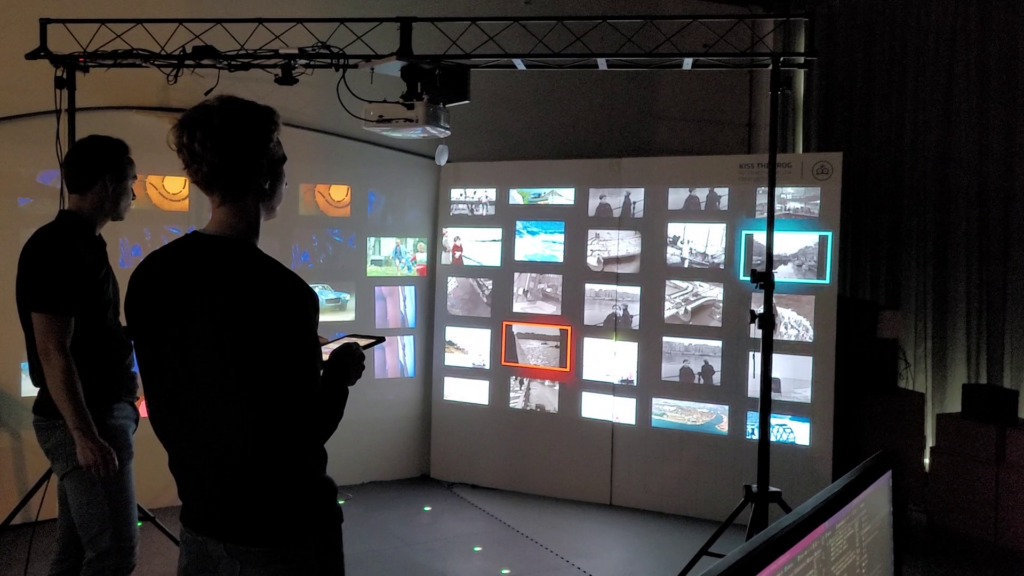
EXPLORATION & RESEARCH – Gotta catch them all
Insight
Decision
The user wants to know which videoclip is selected.
A highlight surrounding the fragment is added.
The user wants to distinguish which tablet is his/hers.
Colors from the palette are chosen to give each user a distinct selection color.
Pointing feels very direct and intuitive, but also weird that everything can be selected at all times.
Certain pauses are added, when the focus lies on the content of the tablet itself.
FINAL EXPERIENCE – Throw and catch
INTERACTION – Point and focus
There are two distinct modi in the gameplay: throw and catch. Users can switch at any time between the two modi.
In catch mode, visitors can retrieve information from clips from the wall.
In throw mode, visitors influence what is seen on (a portion of) the wall by throwing a clip and seeing visually related clips from the archive.

LOOK AND FEEL – Videoclips all around
The videoclips on the wall change position of their frame. This gives a dynamic look and feel and catches the attention of the visitors and allows for refreshing of clips.

PLAYTHROUGH – Throw and catch video’s
Introduction When the visitor has taken up the tablet, the default screen is the disclaimer (bilingual). You can start by pressing the start button. On the intro screen is a simple explainer animation to see what can be done. This is also briefly explained in text. With the OK button -which appears just a little later than the rest of the information so you got the time to read all – continue. Each tablet has its distinct reference color, which mainly serves to make the selection and communication on the wall distinctively yours.

Home The visitor now chooses either ‘throw’ or ‘catch’.

Throw A grid of selectable fragments (stills) appears. By pressing a fragment and swiping it towards the wall, the fragment is sent and appears on the wall. This and associated videoclips are loaded and shown by the algorithm based on non-semantic search.

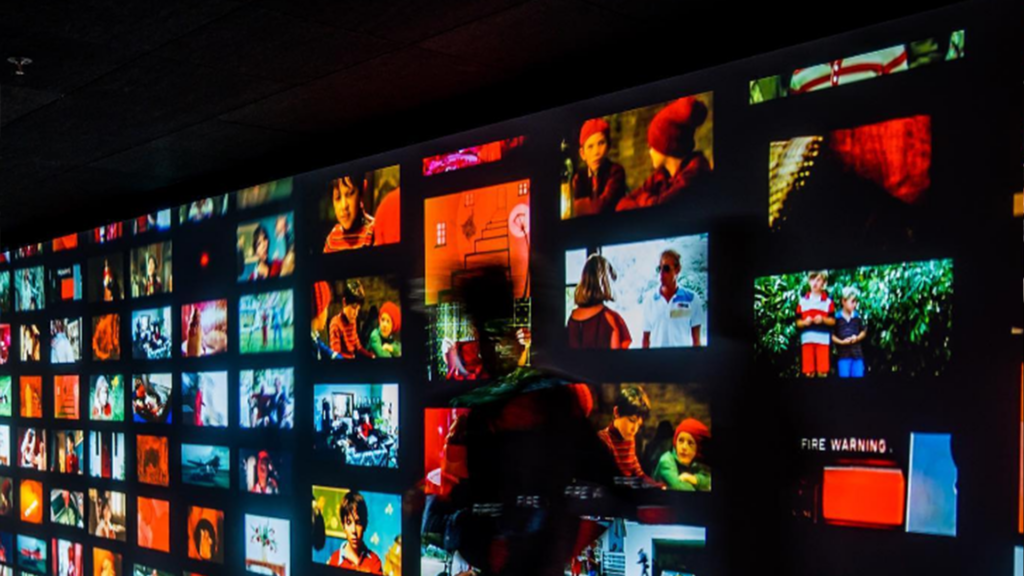
Catch Catching a fragment reveals information about the movie of the clip that has been selected. It can be any clip in the room. This information consists of: the scene of the movie, a control bar, info block, synopsis, crew, and cast.
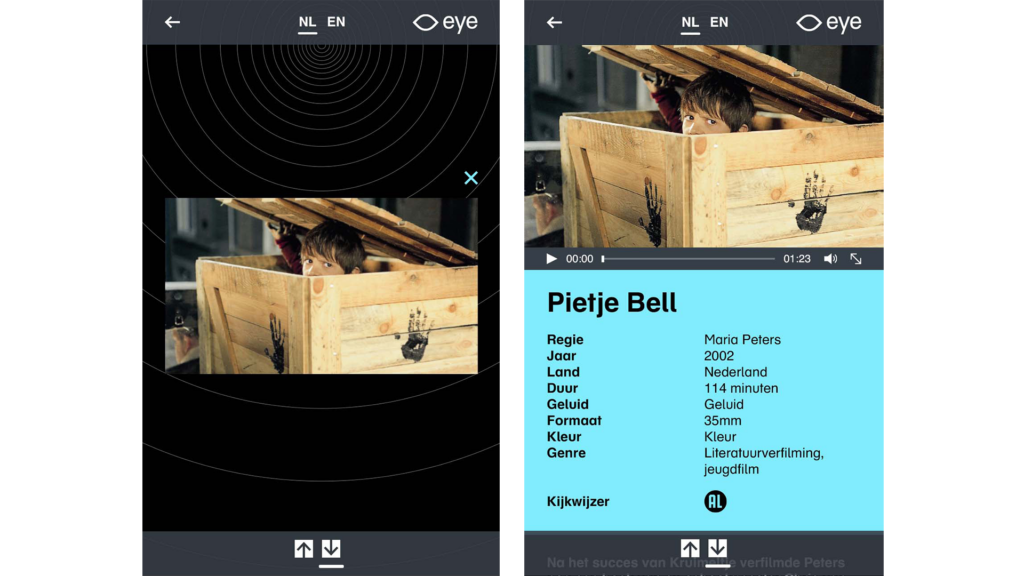
Magic mode Separate tablets are available for magic interactions. When this is pointed at the walls, either a machine gun fire or popping pop-corn is ‘drawn’ on the canvas without changing the shown videoclips.
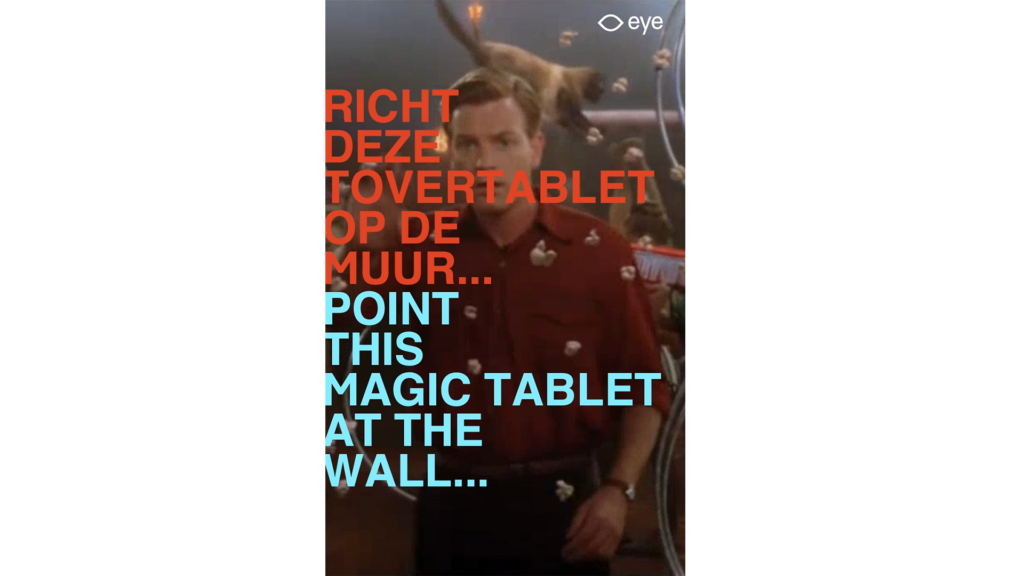
RESULTS – Awards
Winner best use of digital: Film Catcher | Eye Filmmuseum by MUSEUM + HERITAGE 2023 Awards
Gold Winner | Cultural Interior Design – Museum by International Design Awards 2023

